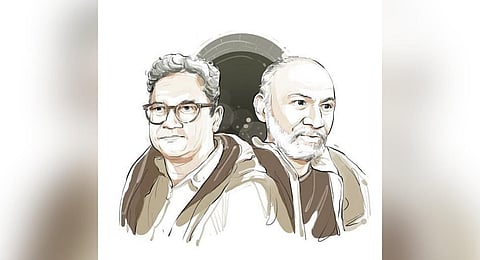

They are a part of a tribe that always sees light at the end of the tunnel — literally and figuratively. Optimism and a belief in new beginnings define their work profile. Whether it is laying a narrow sewer line or a virtual cul-de-sac, they see a “passage to a possibility” — as Gabbar Singh Negi, a foreman among the 41 miners trapped in the Silkyara tunnel, would describe the 16-day ordeal of life in death-like situation.
Here’s a quick recall of what happened on the morning of November 12 at Silkyara in Uttarakhand’s Uttarkashi, nearly 425 km from Delhi: The under-construction Silkyara Bend-Barkot tunnel suddenly caved in. Trapped inside were low-wage construction workers in a 4.5km space underground.
The tunnel is part of PM Narendra Modi’s ambitious Rs 12,000 crore Char Dham project, which aims to link four Hindu pilgrimage sites. The region is prone to landslides, earthquakes and floods.
Insured for Rs 5 lakh for the hazardous work of tunnelling through hard rocks, the trapped miners led by Negi knew little about what lay ahead that morning. “Life overground for us is already tough, we earn hardly enough for our families; most of us are barely literate,” said a rescued miner.
A week after the incident, Wakeel Hasan, the Delhi-based head of the rat-hole miners, got a call to head to Silkyara with his men. “Our expertise is laying and cleaning sewer lines through small tunnels. I didn’t know how I and my men would do this task of rescuing so many people,” says Wakeel.
On the 14th day, when American Auger machines, used in vertical drilling and blasting, went bust due to overheating a few metres before reaching the trapped miners, Wakeel got his head around the situation: his time to chip in had arrived.
Rat-hole mining is a dangerous and controversial method used extensively in Meghalaya to extract thin layers of coal. An environment court in 2014 banned the hazardous practice.
Back in the netherworld of darkness and despair, Negi was trying to keep the fading hopes alive. “We were sad. I told my fellow miners we must accept our fate,” Negi recalls. “For the whole fortnight, I tried to joke around, and told them about miracles in the lives of people. And despite their sullenness, I tried to gather them together for a prayer. After all, that was all I could do, they could do,” says Negi.
Outside the mine, faith was all that prevailed. Even as engineers, geologists, relief teams and tunnel experts went over their plans again and again, the elders living in the sparsely populated hamlet advised them, citing mythological beliefs, to set up a temple at the entrance of the tunnel. Finally, everyone took refuge in the local deity Baba Baukhnag.
Wakeel, who has refused to accept the relief amount announced by the Uttarakahnd CM, said, “The pressure to rescue the workers strengthened our resolve. We had to be glued to our work, and stay focused.”
They worked round the clock in two teams of three each, with one person digging manually, the other collecting debris, and the third pushing it out of the pipe.
“As soon as we removed the last chunk of debris, the trapped miners were overjoyed. They hugged us like family members meeting each other after long,” says Nasir Hussain, one of the six rat-hole miners.
“None of the rescuers could have done this alone, and this is the message I want to convey: we should live and work in harmony,” said Wakeel after the last of the trapped miners was brought out.
The bigger question is as rescued miners say quietly: why did it take so long? And the question that rat-hole miners ask: when and who will come to their rescue and recognise their value?